You don’t have to travel far to see new wildlife. There are many cool critters right around us that we rarely see; finding cryptic or elusive wildlife can be a fun challenge for the whole family.
Take pocket gophers.
Pocket gophers are common in many parts of North America and Central America, and are particularly abundant in the central and western United States. And yet, there’s a good chance you’ve never seen one. Pocket gophers can live in wide-open plains and farm fields, but also in city parks and backyards.
Because they live almost exclusively underground, they can be difficult to spot – especially on purpose.
But there’s a tactic that can provide you with an up-close view of this fascinating little creature. Here’s how you can find one, but first let’s take a look at the bizarre lifestyle of the pocket gopher.
Life Underground
There are 38 species of pocket gophers in North America; some species are quite localized but others have wide ranges. The plains pocket gopher is common in the Great Plains and Midwest, where it is considered an agricultural pest in fields. The Botta’s pocket gopher is found in many nature reserves in California. Texas, the Desert Southwest, Pacific Northwest and Rocky Mountains all have several pocket gopher species.
It is pretty easy to determine if you pocket gophers living nearby. They leave very distinctive, bare-earth mounds. In areas where they are abundant and active, these mounds are highly visible. The fresh ones are topped with very loose, almost-fluffy earth. You will not find an entrance to the mound, which distinguishes the pocket gopher from ground squirrels, voles and many other burrowing mammals.
There’s no entrance because the pocket gopher is supremely adapted for life underground. According to the Arizona-Sonora Desert Museum, male gophers will leave burrows to search for mates and youngsters will leave when it’s time to disperse, but that’s about it. Pocket gophers are pretty antisocial and will spend much of their lives in their own burrow system.
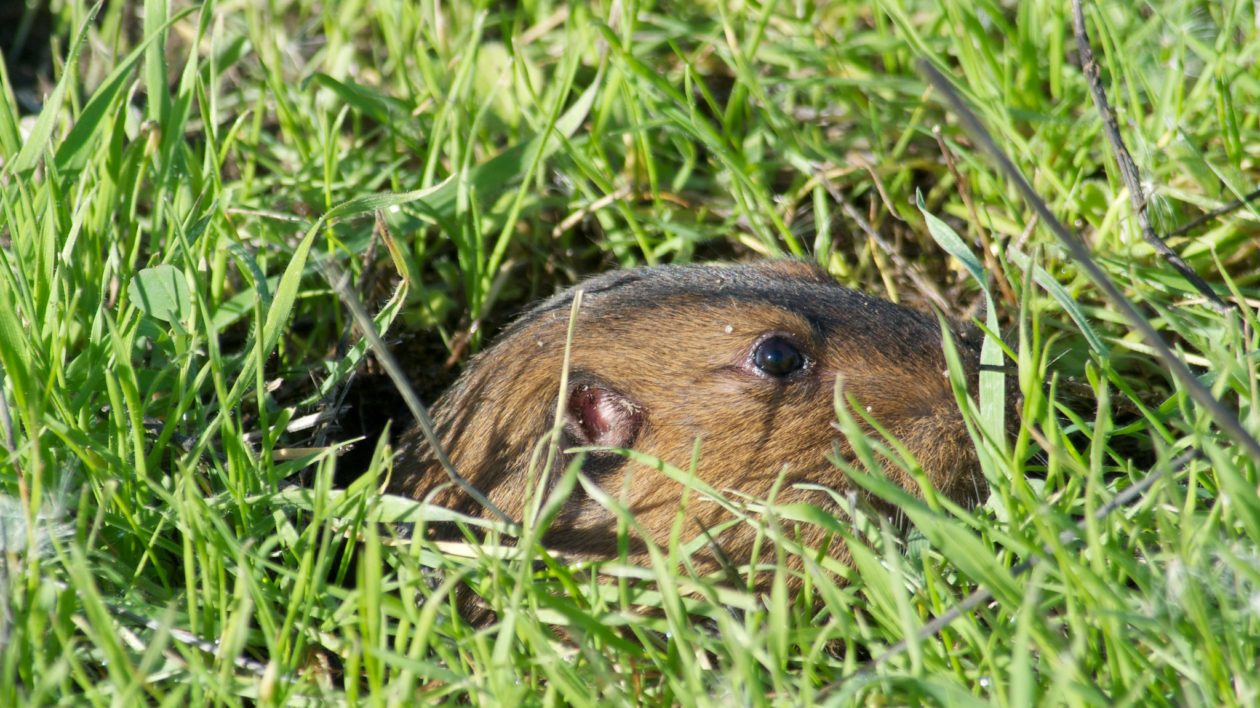
They have small ears and eyes, because they have little use for them. But they have super-sensitive whiskers and tail, that enable to negotiate the dark tunnels. Their tail is so sensitive in detecting the sides of tunnels that they can run backwards almost as fast as they can forward.
Pocket gophers have super-sized cheek pouches (hence their name). These fur-lined pouches are used to gather up large amounts of plant material. They can be turned inside out for cleaning. They also fold in behind the pocket gopher’s large incisors. This way, when the gopher is burrowing through the earth, it can use its teeth as tools without getting soil in its mouth.
You might only see the mound of soil, but beneath the earth is a large tunnel with chambers for specific functions. They essentially have separate “rooms” that serve as a nursery, a kitchen and, yes, a bathroom.
So how do you see an animal that lives almost exclusively underground? Here’s how you can participate in the sport of pocket gopher spotting.
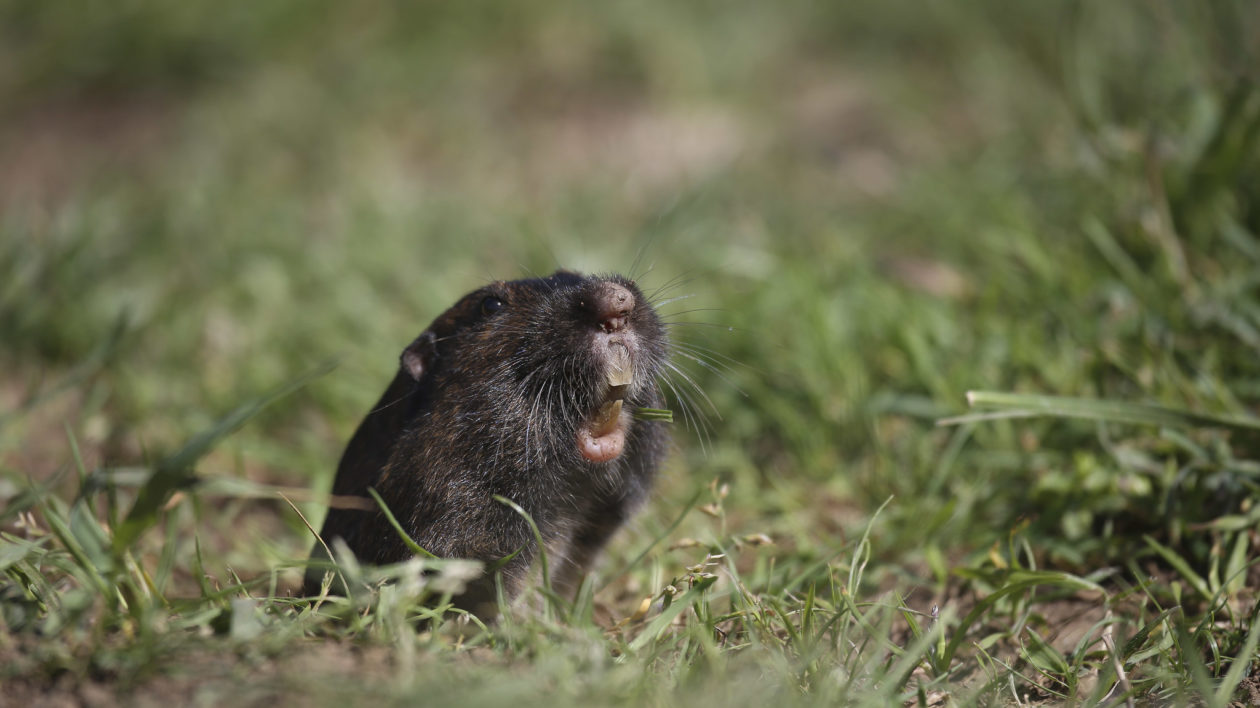
How to Spot a Pocket Gopher
Pocket gophers block the entrance to the main tunnel with a loose plug of soil. T If the plug is disturbed, the pocket gopher very quickly seeks to repair it and re-block the entrance. Finding the entrance plug and exploiting pocket gopher habits is the key to a successful pocket gopher safari.
This tip comes from my friend and ultimate mammal watcher Jon Hall. Jon taught me this technique on a trip last summer to Idaho, where we used this to get a great view of the northern pocket gopher. I had seen a few pocket gophers before while out hiking, but they were always lucky, incidental sightings – never on purpose.
First, find pocket gopher mounds. There are often many in the same vicinity. You want a fresh mound. You are looking for very loose soil, think about the soil equivalent of a bottle of Kraft parmesan. If the soil looks compacted or hard, the mound is not fresh.
Once you’ve found a fresh mound, you need to probe for the plug. Bring a broom stick or just a straight stick. Tap around the mound. The plug is loose to allow air flow, so once you tap it, it will collapse quickly.
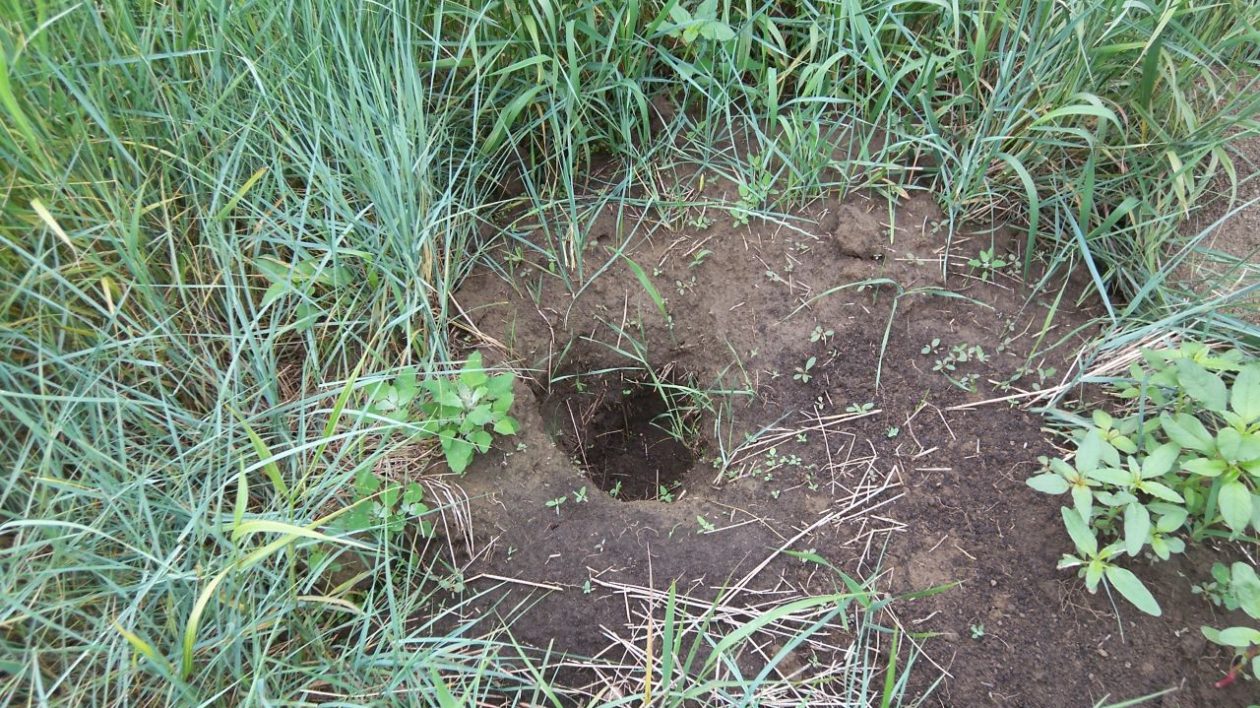
Some mounds that look fresh may not be. It really doesn’t take much to reveal the main trail. Just tap lightly and move on if no earth collapses.
When the soil does fall, it exposes the burrow. Now wait. It might take 15 or 20 minutes, but the pocket gopher will sense either air or sunlight, and seek to refill the hole with soil. At first you will likely just see slight movements. Perhaps it will look like a wall of soil coming your way. Pay attention.
The pocket gopher is quite a busy worker and resembles a rodent bulldozer in action. It pushes earth with its snout and front paws. As it refills its burrow, you will get a clear view of its head and maybe more. It may pause, giving you a chance to smile at its beady eyes and tiny ears. These are very cute little animals. And they’re fun to watch. Sometimes they will really kick up the dirt, perhaps even showering you with some.
I should note that there are a couple of pocket gophers that seem to be viewable without poking around their burrows. I have seen Botta’s pocket gophers, a species common in parts of California, and often seem to pop their heads up out of burrows. I once saw a southern pocket gopher feeding in broad daylight under a feeder in the birding hotspot of Arizona’s Madeira Canyon.
Also, I anticipate the inevitable nasty correspondence that people shouldn’t disturb pocket gophers. This is a harmless activity and pocket gophers refill their plug holes constantly. It’s what they do. Burrows are frequently disturbed by predators including coyotes, weasels and many more.
Pocket gophers are typically despised by humans. They are trapped extensively, and still subject to bounties in some agricultural areas. You temporarily disturbing their hole is not harming them, and is actually just something gophers do all the time. Viewing pocket gophers is a great way to build appreciation for these little beasts. You’ll observe them but the hole will be refilled within a minute. Then the pocket gopher is back underground.
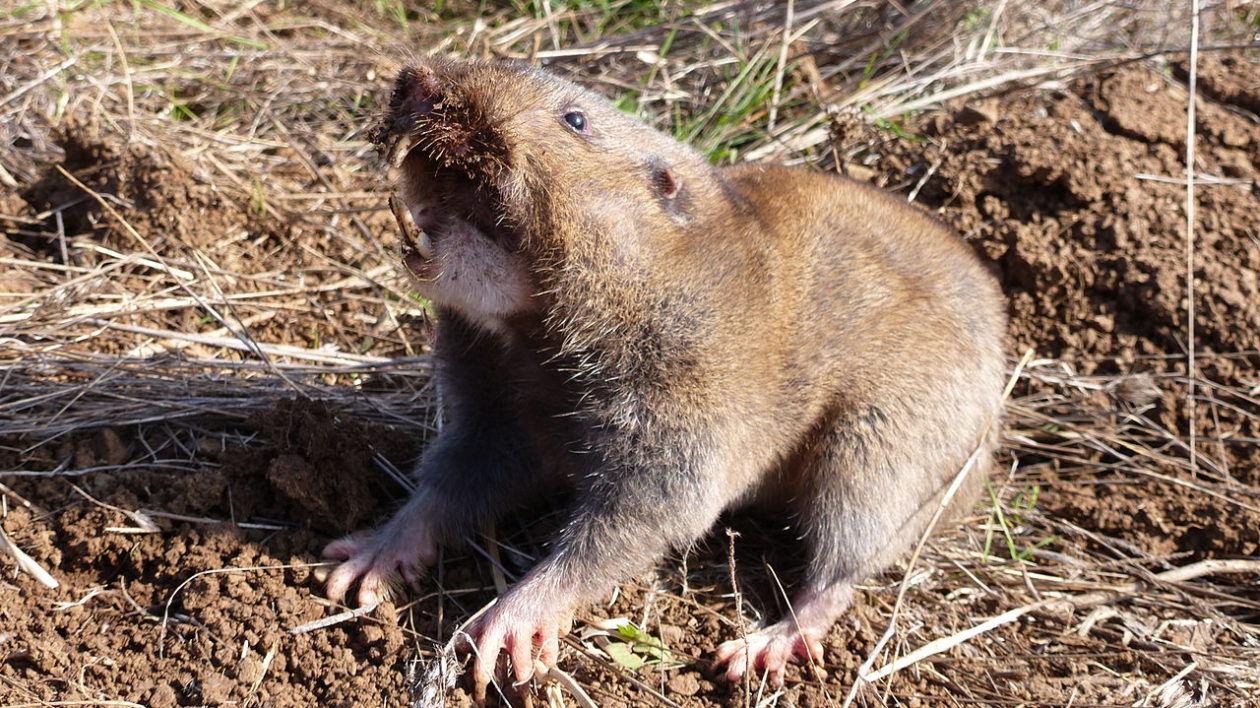
A Conservation Note
Pocket gophers could use some love. While no one wants want tilling up lawn or garden or golf course, in natural areas they are important to ecosystems. Their burrowing aerates soil, reducing compaction and erosion. In degraded areas, this is easy to see. Soil in the cheatgrass-infested hills near my Idaho home is often heavily compacted. The pocket gopher burrows allow rainwater to better soak into the soil.
Abandoned burrows provide homes for a long list of creatures, and the gophers themselves are important prey species.
So take the family and find yourself a pocket gopher, and take a moment to appreciate this busybody of the rodent world. Let me know if you’re successful in your quest in the comments.
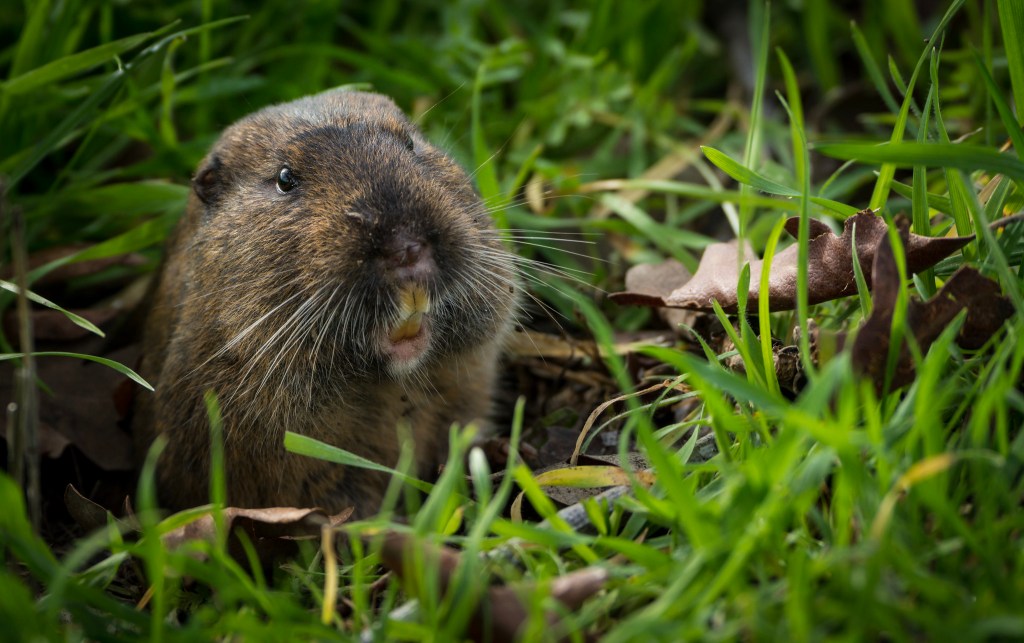



Excellent article, even tackling our hidden biases against gophers. What effect do pocket gophers have on newly sprouted plants? What do they eat?
I work in 2 gardens in a re-established prairie. The vegetable garden is carefully fenced against deer and rabbits but some new sprouts such as beets just disappear. We suspect ground squirrels.
We have identified the plains pocket gopher in the unfenced prairie, where we try to add native forbs, usually sprouted inside but sometimes from seed outside. Do pocket gophers or ground squirrels eat plant sprouts? Purple prairie clover? If yes, any suggestions about how to keep them apart until the plants get bigger? Thanks much for your help.
Linda Ferring
Blair, Nebraska
Hi Linda,
Thanks for writing. It could be either pocket gophers or ground squirrels causing the damage. Both will eat plant sprouts. In fact, I have seen pocket gophers pulling down plant sprouts in our backyard. They are quite difficult to contain as they are such expert diggers. I’m not a gardening expert but you may want to talk to a local seed store about fencing options.
Best,
Matt
I moved into an area in Southern California where the pocket gopher dominates all yards. So they are obviously despised because of the destructive nature. But I love all types of animals so I wanted to help the homeowner where I was staying. I came up with a capture and relocation plan. So when the heavy rain started I was able to begin the extraction process. So over a 6 month period just in a small backyard I captured over 20 smooth toothed pocket gophers. I had to simulate flooding for safe removal when the rain stopped. Plenty of open fields for them to thrive and enrich their environment. After extensive research I found how amazing this animal is. I kept some in a controlled environment with underground visual access. WOW!!! I’ve been using their nitrogen and mineral enriched soil to plant a variety of plants. The explosion of life that they can create is absolutely staggering. And they love carrots and fresh sod!!! I love watching them and have people changing there perception of this amazing creature. The amount of time doing this experiment was worth every minute.
Do moles create similar soil mounds? For about two years I had exactly the kinds of mounds you describe appearing in my 1/5 acre yard in Bellingham, WA. At the time I attributed them to moles, but perhaps they were the work of pocket gophers. As new mounds appeared, I gathered up the wonderfully aerated soil and translocated it to raised beds in my vegetable garden. I considered them quite helpful critters, and was disappointed when my resident burrowers eventually moved on. I still periodically spot similar soil mounds around my neighborhood.
Yes, mole mounds do look very similar. Moles are found in Washington and are a likely culprit. I do not know if this tactic could work for mole spotting because they have different burrowing habits.
Are they related to the naked mole rats? Until this article, I never knew pocket gophers were ubiquitous.
Both naked mole rats and pocket gophers are rodents. Although both spend much of their lives underground, their habits are quite different. Pocket gophers are solitary. Naked mole rats live in large, complex colonies. Their behavior is really bizarre and fascinating — maybe a topic for a future post!